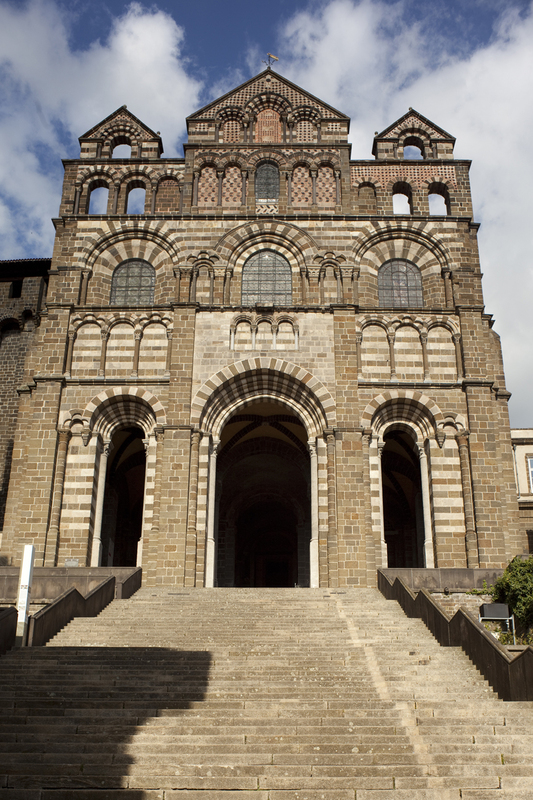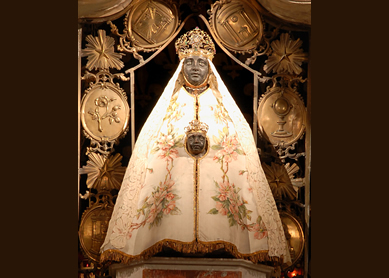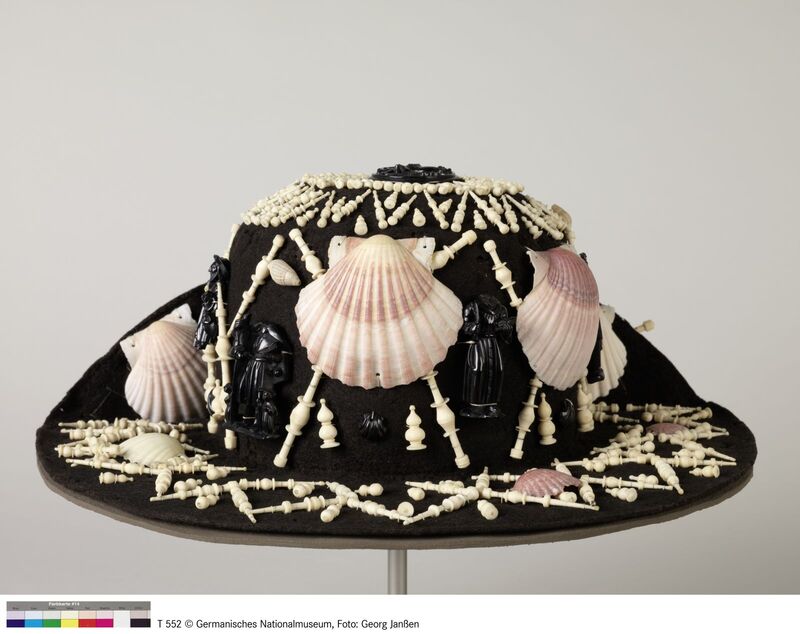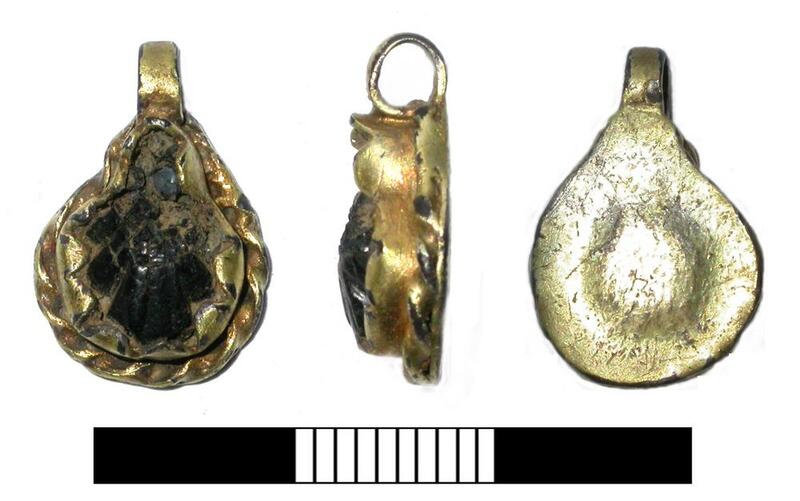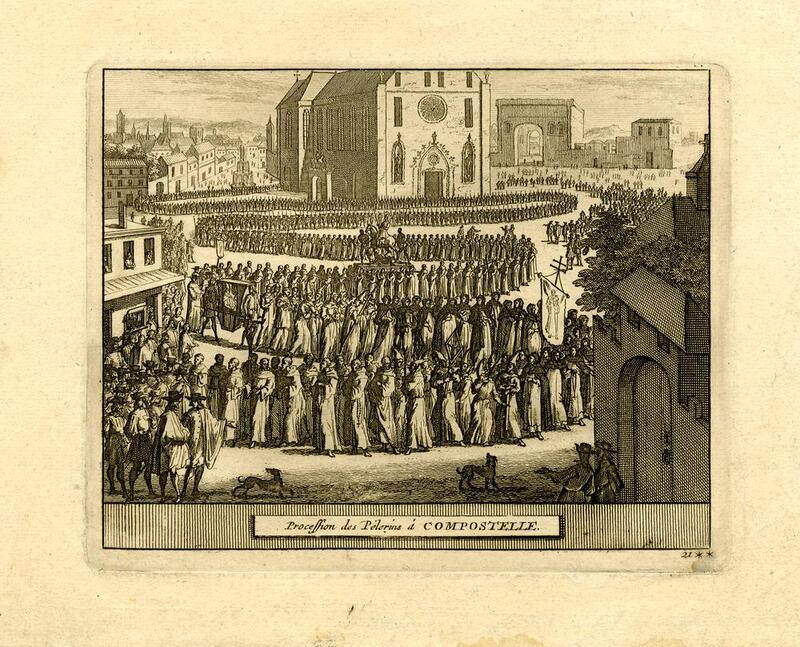The History of Medieval Pilgrims and the Way of St. James
Medieval Pilgrim Motivations:
For medieval pilgrims, the opportunity to partake in a pilgrimage meant allowing themselves to grow in their faith, to become closer to God, and to receive protection and healing at the reliquary from the remains of a saint, a relic. However, what made a pilgrimage and being a pilgrim different and perhaps more impactful than being a typical Christian who attends Mass, goes to confession, or pays indulgences?
Pilgrimages held two significant purposes for a pilgrim, the journey and the relics. In general, the journey of a pilgrimage offered a religious experience across a long, difficult trek that demonstrated their devotion and developed their faith through trials, prayer, and time. At the end, once the pilgrim reached the final destination, the pilgrim could experience satisfaction, healing, and peace from the saint and God. With this understanding, God received worship from their physical act of devotion in partaking on a pilgrimage and from their prayers, while the saint received the pilgrims’ respect and reverence.
Medieval churches collected, confirmed, and shared relics with the public. The church authenticated the relics to ensure their saint nature. With this, the church protected relics of saints because the remains provided healing and intercession for the Christian who visited these remains. Therefore, the remains of St. James provided pilgrims with these general opportunities for healing and intercession.
The Way of St. James Route:
While each pilgrimage offered the general opportunity to deepen one faith and favor with God, pilgrimages offered various possibilities to visit different saints, of different pilgrimage lengths, and in different locations.
The Way of St. James is the route through France, comprising four main routes all starting in various French cities that end in Santiago de Compostela. One of the routes, Le Puy-en-Velay, begins in the southwestern city of Le Puy. Historically, it is the oldest French route and connects with the main Spanish route, Camino de Santiago. The route follows various terrains like the volcanic environment, countryside, and the mountainous Pyrenees. In 951 C.E., bishop Gotescalco traveled through the Pyrenees to the shrine of St. James. His voyage marked the first from France to the shrine, originating the Le Puy-en-Velay route. While the route itself was difficult, it offered the possibility of seeing different reliquaries along the way.
Figure 1 depicts the starting location of the Le Puy-en-Velay route, the cathedral, Notre Dame du Puy-en-Velay. The cathedral was constructed in c. 11th-century C.E. in the Romanesque style and notably holds the reliquary of the “Vierges Noires”. The rounded arches that decorate the many arches of the cathedral are a signature piece of the Romanesque architecture, along with the simple design of the stone and ornamentation. There are also other styles incorporated into the design. The cloister of the building, the covered outside walkway aisles, demonstrate Muslim styles with alternating light and dark sandstones, similar to the light and dark patterning of Mosques.
Figure 2 depicts one of these reliquaries, the “Vierges Noires” of Notre Dame du Puy. Upon setting off on their pilgrimage to Santiago de Compostela, a pilgrim could venerate Madonna at the start of their journey. Her presence in the reliquary and in le Puy, France, allowed for Christians to have a direct connection with her by touching her and connecting the person with Jesus as well. The convenience of this relic was one of the reasons St. Louis retrieved it from the Holy Land so that the French and Europeans did not have to travel to Jerusalem to venerate Madonna. Her fame and authenticity became solidified after a miraculous incident where a woman touched the dolmen stone, a stone from a tomb, and received healing in front of Madonna. The reliquary itself is made of wood covered with a white cloth robe, that is embellished with gold detailing. She dons a tall golden crown and represents the Romanesque style. Therefore, she represents an example of many relics along the Le Puy-en-Velay route. Other reliquaries along the way include of Sainte Foy in Conques and the abbeys and monestaries of Figeac, Marcilhac, and Moissac.
Pilgrim Practice and Dress:
Pilgrims, in general, wore particular garb and dress in order to distinguish themselves as pilgrims. The pilgrims of St. James had a distinctive appearance of the cockle or scallop shell, which they would embroider on their pilgrim’s hats and wear around their necks. They also carried a staff and satchel. On their way, this signifying garb identified them with welcoming towns. From town to town, hospitals and local homes would invite the weary travelers in. Once these pilgrims reached Santiago de Compostela, they would receive a token to signify their completion of their pilgrimage, along with the personal spiritual experiences and growth they gained.
Figure 3 depicts The hat of Stephan III. Praun is an existing example of what a pilgrim of St. James would wear on their journey. The signature cockleshell of St. James with bones and miniature St. James are embroidered into the hat to signify that who the wearer was, a pilgrim of St. James.
Figure 4 illustrates how once the pilgrim finished their pilgrimage, they could buy various souvenirs from their trip. While the outside is pear-shaped, the inner layer is in the shape of the cockleshell of St. James, carved from jet stone laid into silver. With a metal loop at the top, the pilgrim could attach the piece to their attire and wear it as a symbol of their accomplishment. The object helps to create a greater understanding of the pilgrim’s experience by representing something the pilgrim could own as a member of the pilgrimage.
Therefore, whether a small pendant or a larger item, the pilgrim could be identified by the symbol of St. James.
The Figure 6 image depicts the late 18th c. C.E. etching print illustrates not only the popularity of this pilgrimage but also documents the cultural practice. The pilgrimage to Santiago de Compostela was one of the most popular pilgrimages in Europe because of the convenience of being in Spain versus the Holy Land and the reliquaries that the routes included. The long procession marks the arrival and achievement of the pilgrims and the triumph of being able to come to the shrine of St. James.
